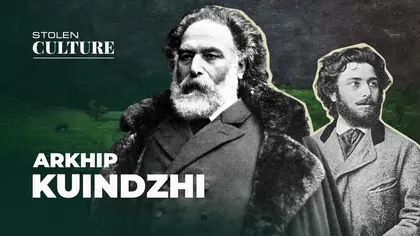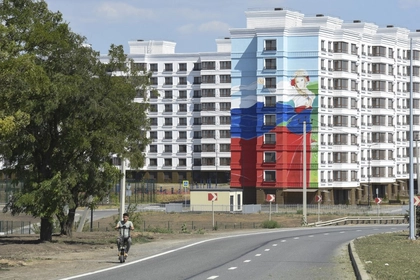At the present moment, Russia is using weapons in an attempt to conquer Ukrainian territories. In the process, it is literally and figuratively erasing the past by attacking the memory of Ukrainian identity and appropriating Ukraine’s historical and cultural heritage.
One of the first cultural casualties of Russia’s full-scale invasion was the Kuindzhi Art Museum, with its masterworks by 19th-century landscape painter Arkhip Kuindzhi, who was born near the Ukrainian city of Mariupol. The museum, like the city around it, has been razed to the ground by the Russian army.
- View the freshest war in ukraine update in the Kyiv Post’s daily news pieces that came out today.
- Obtain the most current Ukraine news articles released today.
JOIN US ON TELEGRAM
Follow our coverage of the war on the @Kyivpost_official.
As they’ve done with many prominent Ukrainians, Russians have "appropriated" Kuindzhi for themselves. According to a report by The Moscow Times, the museum’s treasures were removed at the outset of the fighting. When Alexander Mozgovoi, a pro-Russian TV news anchor from occupied Donetsk came onto the scene, he interviewed Natalia Kapustnikova, the director of another Mariupol institution, the Museum of Local History. She told him that she had personally hidden several priceless Kuindzhi paintings.
Shortly afterward, Mozgovoi proceeded to film what was, in effect, the looting of Mariupol’s art treasures.
A Ukrainian artist who painted Ukraine
Apart from the physical theft, Russians also seek to appropriate the artist’s ethnicity, claiming he had "Russian roots." But Arkhip Kuindzhi was a Ukrainian of Greek-Tatar origin. Born on Jan. 15, 1841 (although two other passports indicate 1842 and 1843) Arkhip’s father was said to be a poor shoemaker. His surname, "Kuindzhi" means "goldsmith" in Crimean Tatar, so it’s assumed that his grandfather plied that trade.

IMF Approves $1.1 Billion Loan Disbursement to Ukraine Before Trump Inauguration
Despite the fact that Kuindzhi had no education, he became one of the most famous artists of his time. His mysterious popularity was amplified by his austerity and refusal to exhibit his works. Nevertheless he became famous for the paintings "Moonlight Night on the Dnipro" and "Ukrainian Night," with their signature "glow" effect.
The family lived very poorly, so Kuindzhi was hired from early childhood to graze geese. Later he served as a contractor for the construction of a church. Then he worked as an assistant to a bread merchant who noticed Kuindzhi's drawings and advised him to go to Crimea to visit the famous painter Ivan Aivazovsky (baptized Hovhannes Ayvazyan).
Kuindzhi walked from Mariupol to the Crimean city of Feodosia, on the Black Sea. Tired and emaciated, the artist arrived in the summer of 1855, but did not find Aivazovsky. A month later, Aivazovsky returned from Italy and merely instructed Kuindzhi to paint the fence around his house. But the boy wanted to become a real artist and create his own paintings. So he left Aivazovsky and went back to Mariupol on foot, where he began work as a technician in a photography studio, retouching images.
From 1860 to 1865, Kuindzhi worked in a photo studio in Taganrog. He did the same job in Odesa for several years, as well.
The turning point
He desired to enter the Academy of Arts in Petersburg, but due to his lack of training he was not accepted. Undaunted, Kuindzhi kept improving, and in 1869 he submitted a request to the Academic Council. A year later Kuindzhi passed the relevant exams.
While working in a photo studio, Arkhip Kuindzhi met Ivan Kramskoy and Viktor Vasnetsov. Then, within the walls of the Academy of Arts, he met with Ilya Repin and Vladimir Makovsky. These people largely determined the artist's direction.
His early works "Autumn Off-road," "The Forgotten Village" and "Milky Way in Mariupol" brought Kuindzhi considerable success.
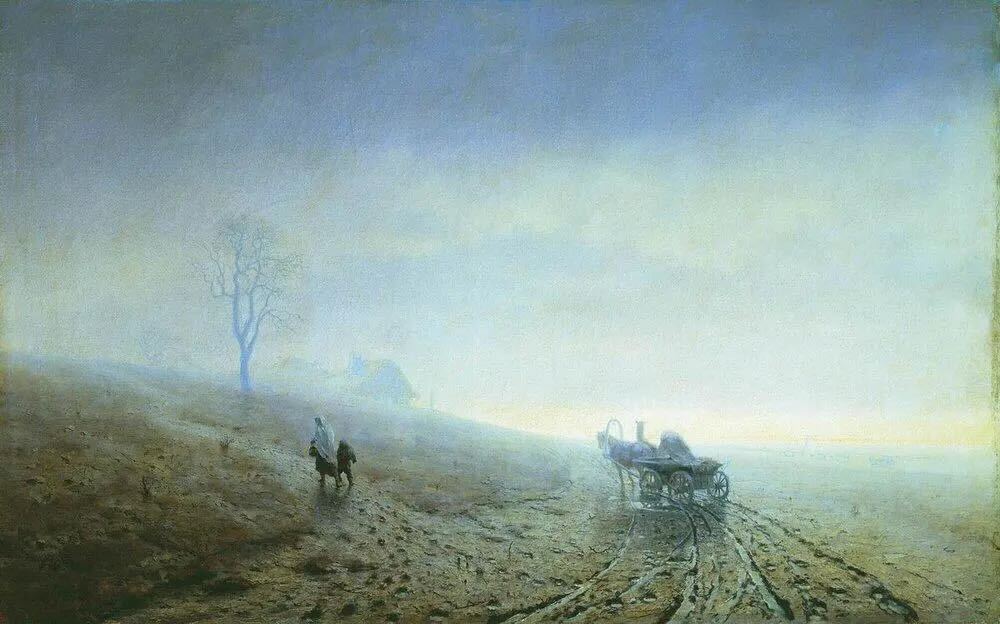
Autumn Off-road, 1870
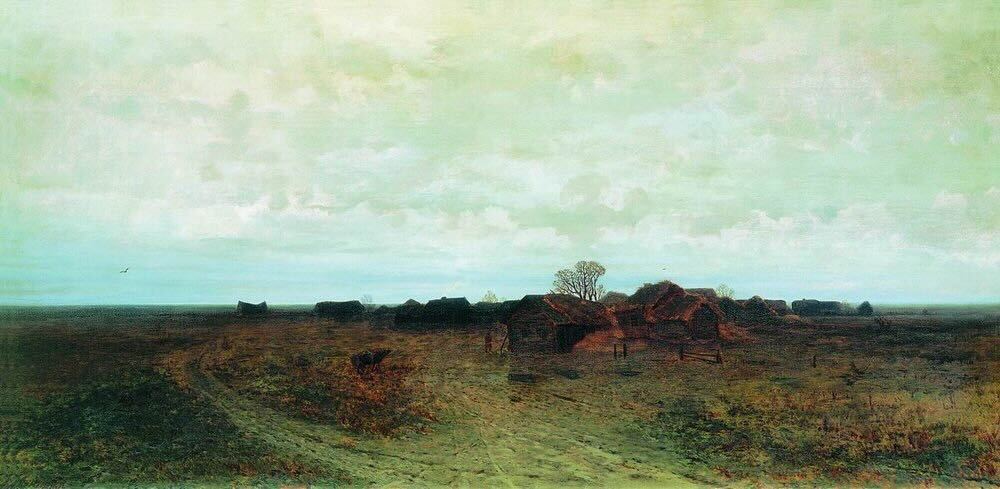
The Forgotten Village, 1874
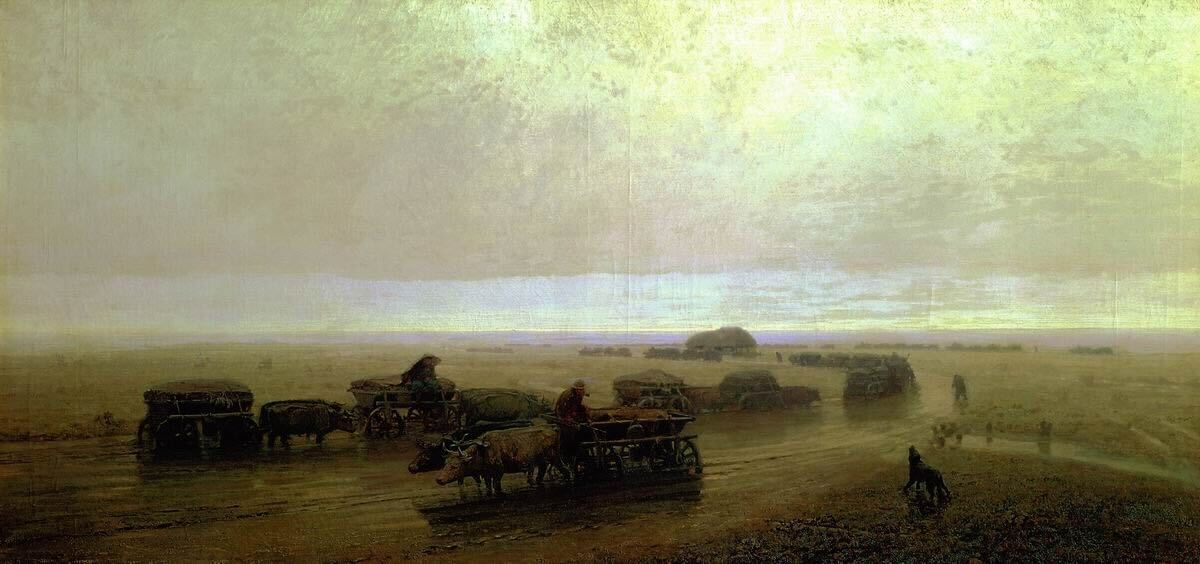
Milky Way in Mariupol, 1875
In 1873 and 1875, Kuindzhi made creative trips to Berlin, Dusseldorf, Munich, Paris, Vienna, and London. In Paris, he met with Repin and told him about his intention to get married. From there, he returned to Mariupol, where he married the daughter of a rich merchant, Vera Ketcherdzhi-Shapovalova, a Russified Greek.
Returning to Petersburg in August 1875, the artist took part in the exhibition of the Society of traveling art exhibitions with the painting "Steppes." In a subsequent exhibition he showed "Ukrainian Night," which brought him universal public acclaim.
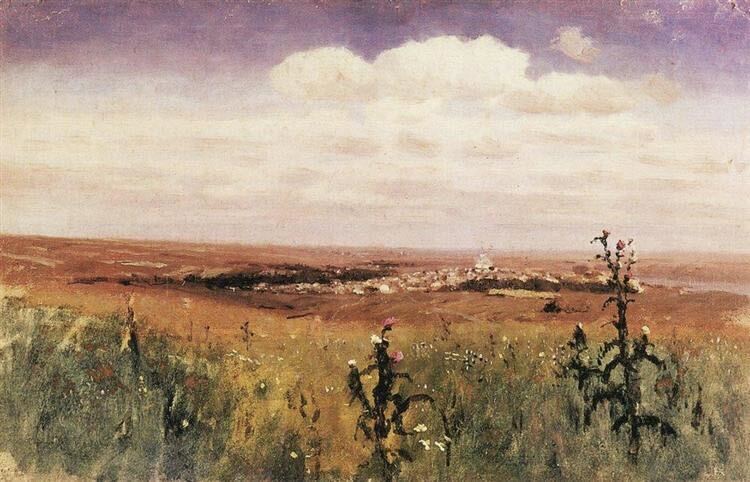
Steppes, 1875

Ukrainian Night, 1876
In 1878, Kuindzhi's paintings were exhibited at the world's fair in Paris.
In 1880, he organized an exhibition of the painting "Moonlit Night on the Dnipro," during the creation of which Kuindzhi hardly left the studio. He exhibited it in a completely darkened room, with only artificial side lighting falling on the canvas, creating the illusion of twilight. The work was an unprecedented success, causing a real stir among the public. The painting struck viewers with a new color scheme, which the artist achieved by conducting experiments with colorful pigments and intensively applied bitumen. Over time, though, the asphalt paints turned out to be fragile, decomposing and fading under the influence of light and air.
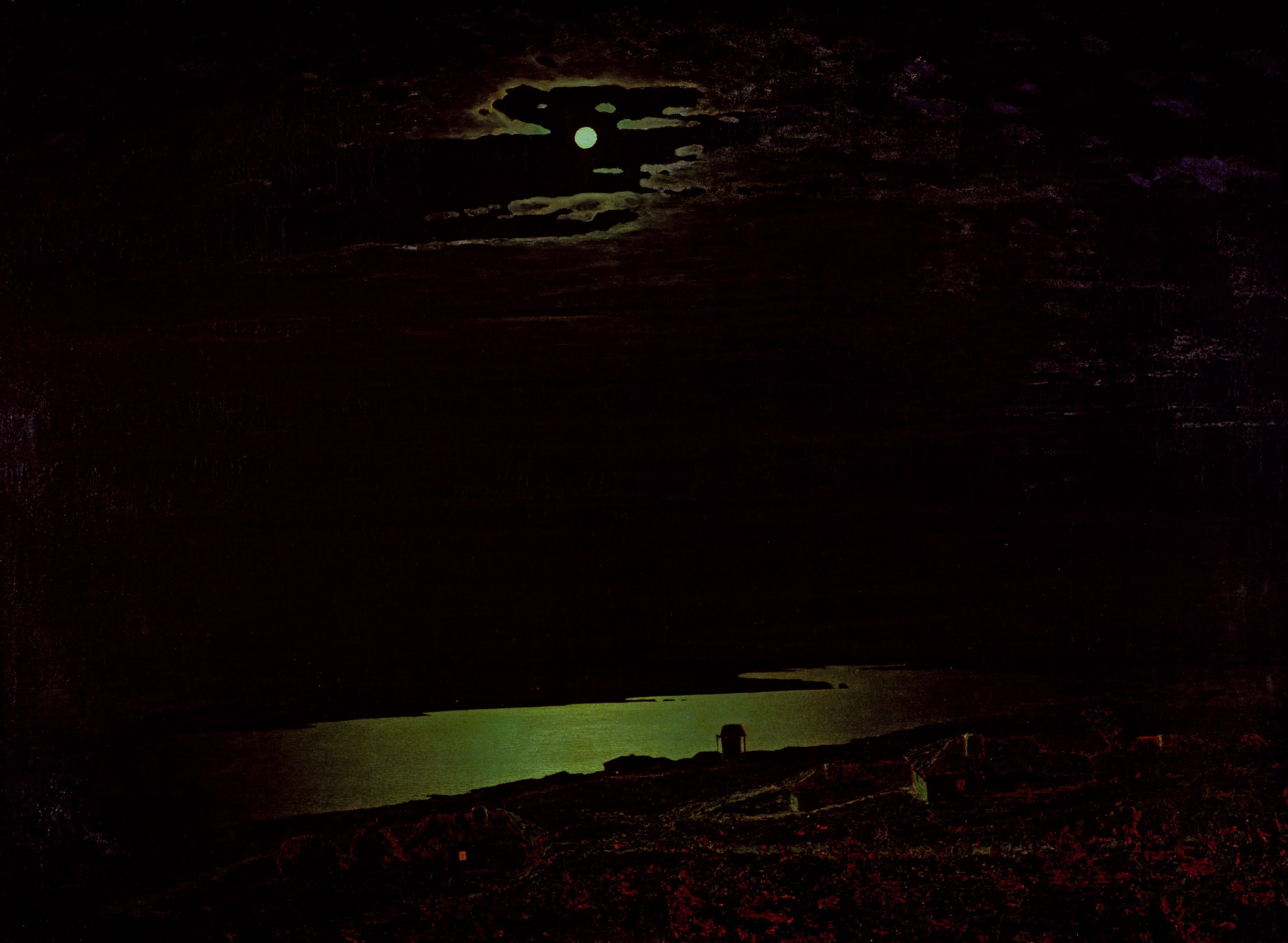
Moonlit Night on the Dnipro, 1880
However, not all subsequent works were so successful. Indeed, from 1882, until the end of his life in 1910, he did not present a single work to the public.
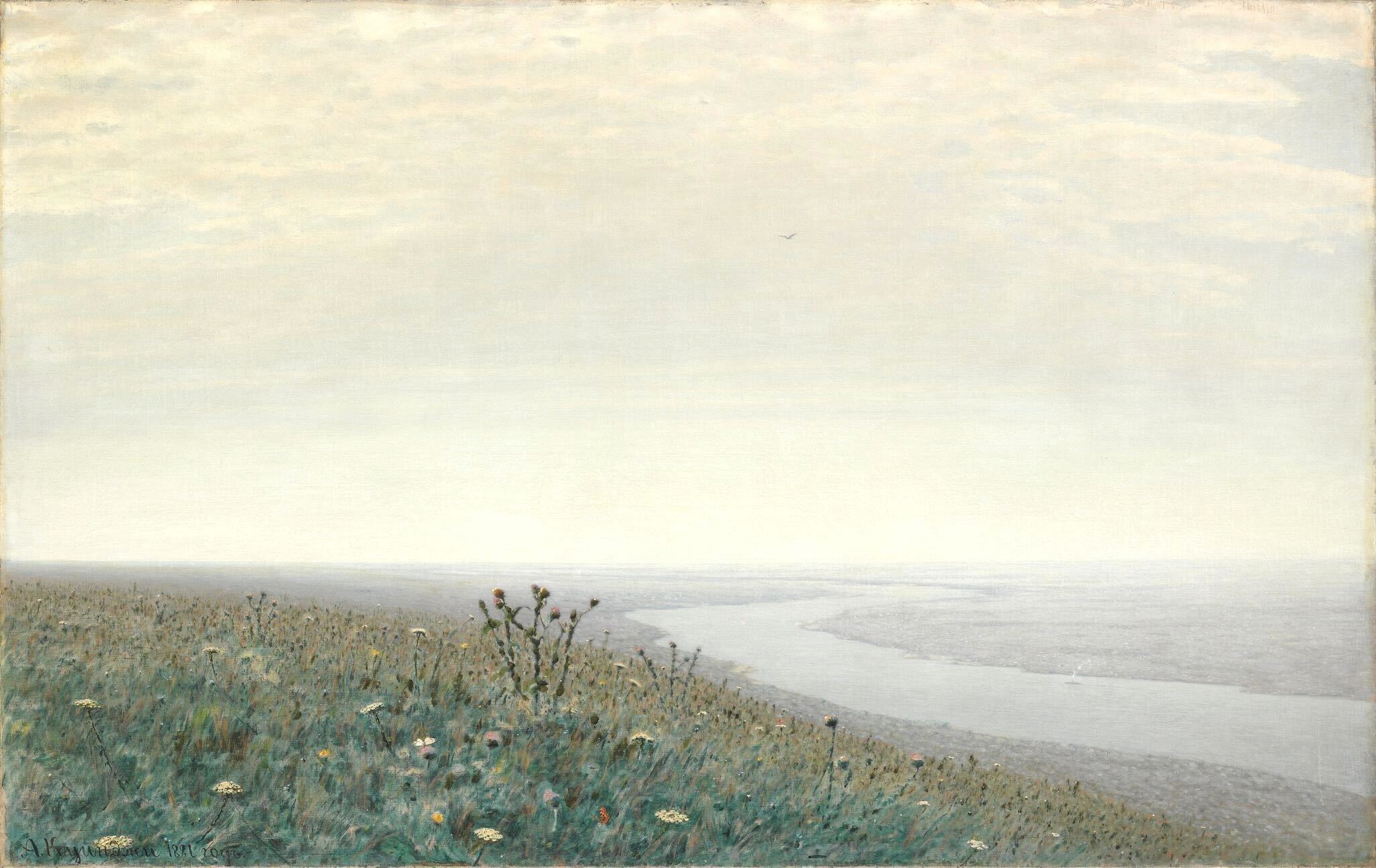
Dnipro in the Morning, 1882
The public and critics believed that Kuindzhi had exhausted himself, but the artist, on the contrary, continued to work in different styles. At the same time, he was looking for new, more resistant pigments and primer bases for paints. The artist created about 500 sketches and full-fledged paintings, as well as about 300 graphic works. Many of these works were combined into thematic series. He explained his departure from the public eye by saying that he wanted to part with his audience while at the peak of his creative powers, rather than wait for his talent and skill to wane.
Despite his large fortune, Kuindzhi lived modestly. When recognition and fame came to him and his paintings began to sell for a lot of money, he bought a house in Petersburg, where he renovated apartments to rent them out.
The artist devoted the last years of his life to patronage. In 1909, the Arkhip Kuindzhi Society was founded in Petersburg at his expense to support talented young artists. He donated all his paintings, money and land in Crimea to this society. Emperor Nicholas II took him under his patronage. The society lasted until 1930.
The great landscape painter died on July 11, 1910 in Petersburg.
The Kuindzhi Art Museum, located in Mariupol, was destroyed on March 21, 2022 by a Russian air strike. According to the Mariupol City Council, the paintings of Kuindzhi and other Ukrainian artists were not there at that time. They had been removed, thus avoiding destruction. But the Russians systematically stole what was saved.
You can also highlight the text and press Ctrl + Enter


